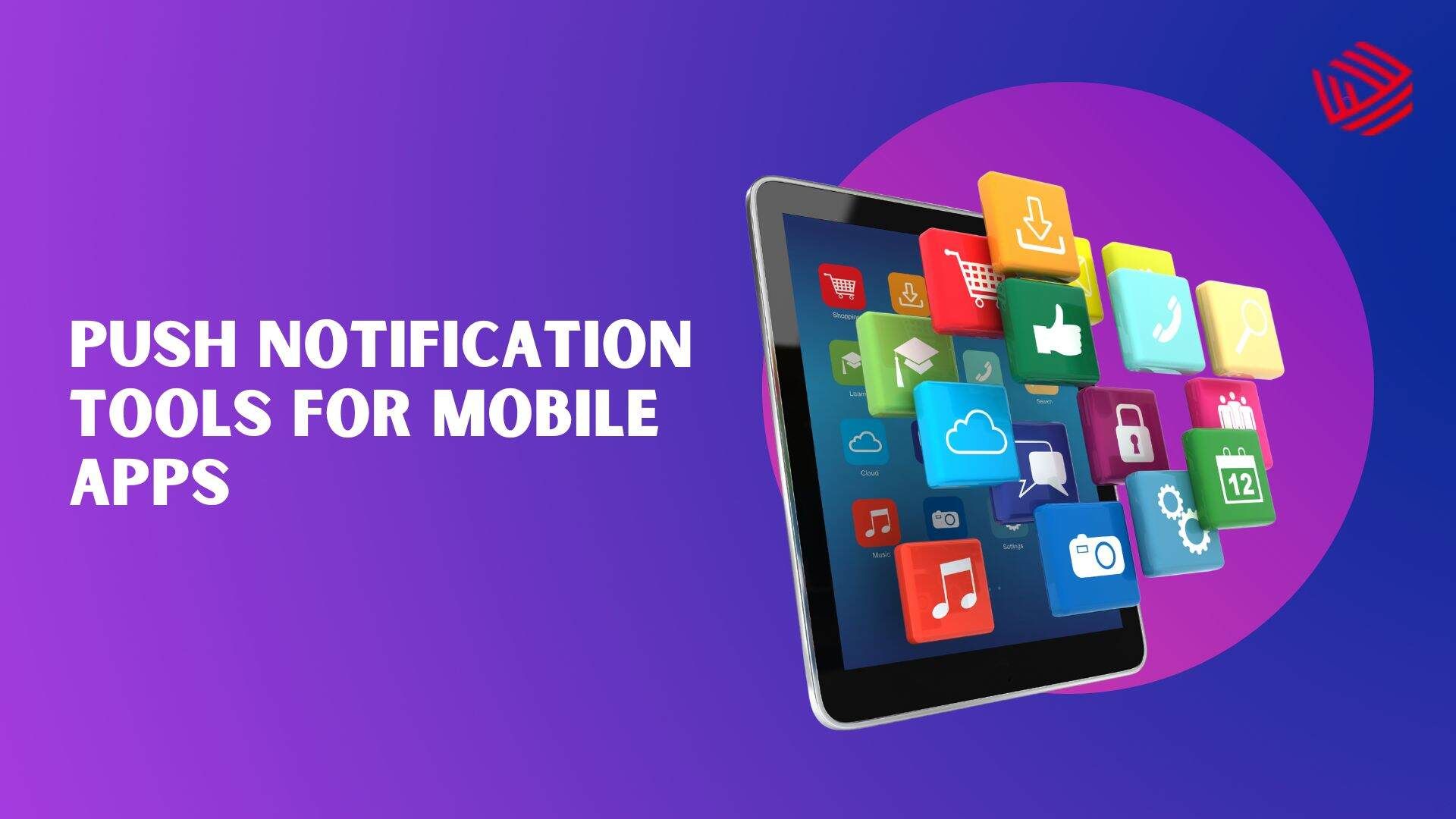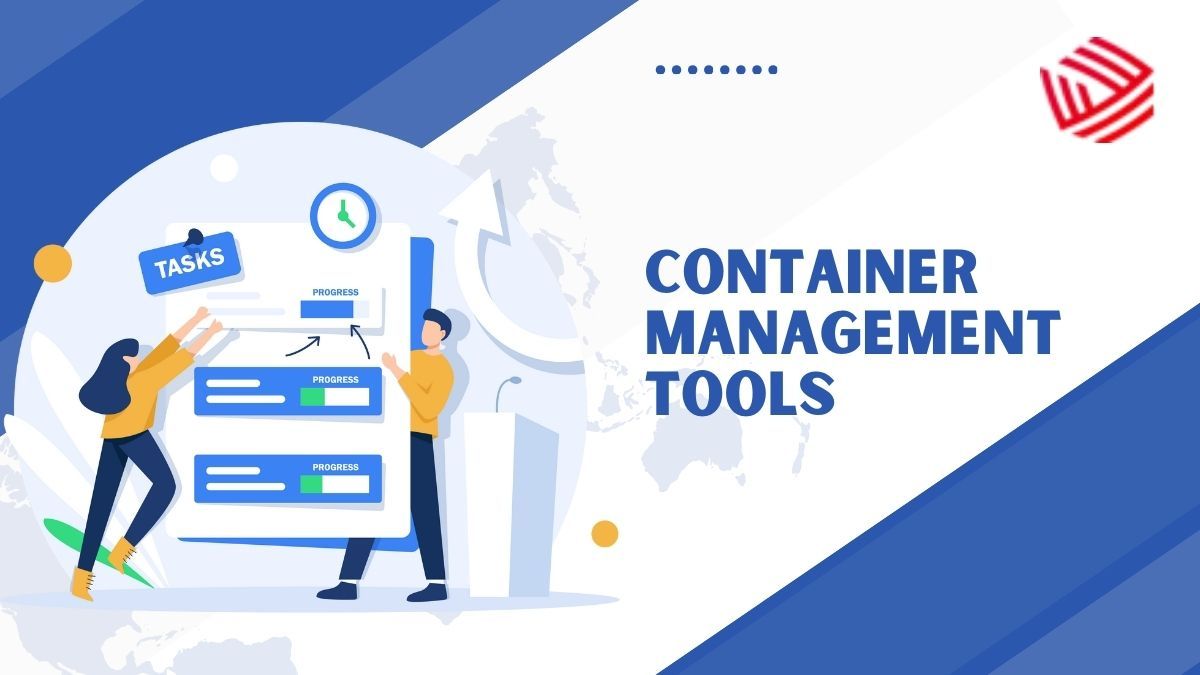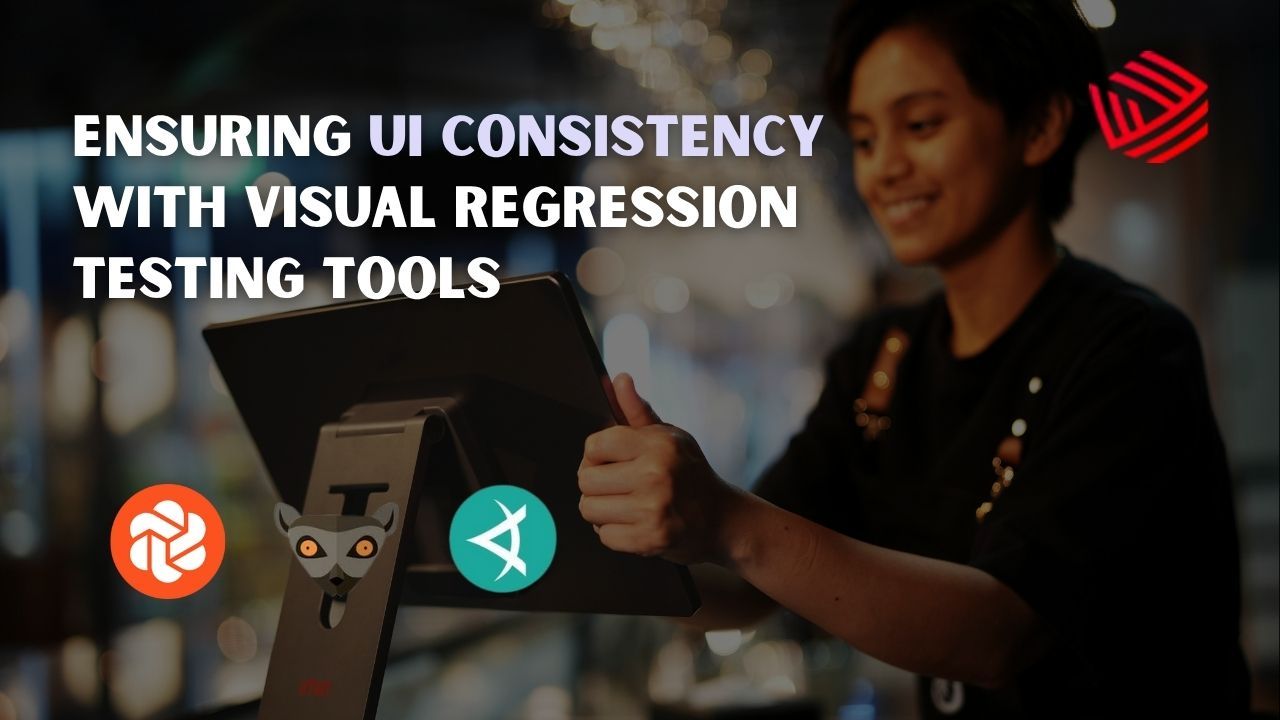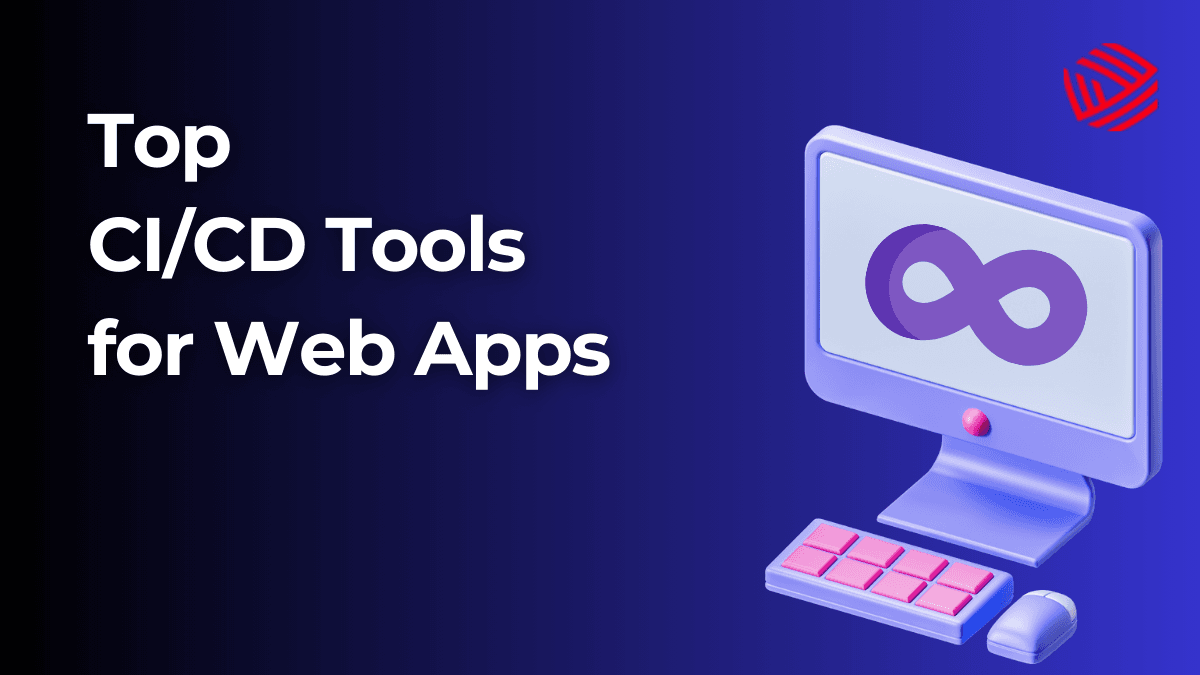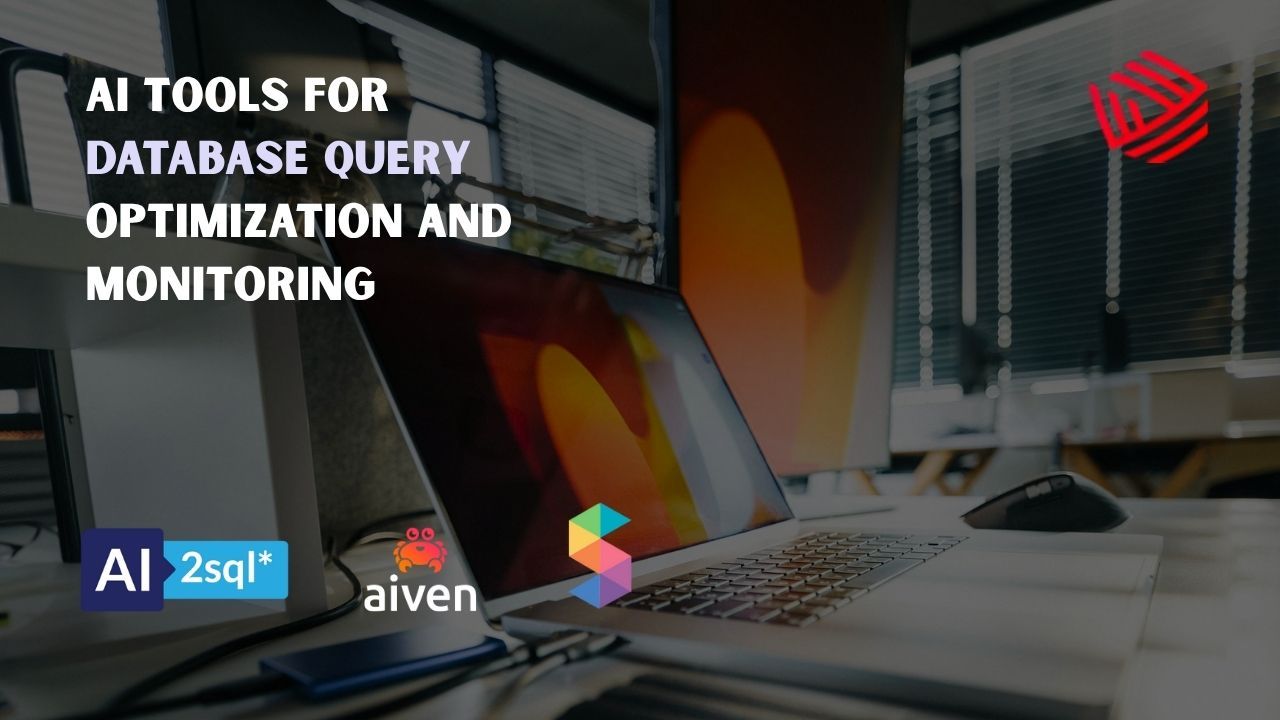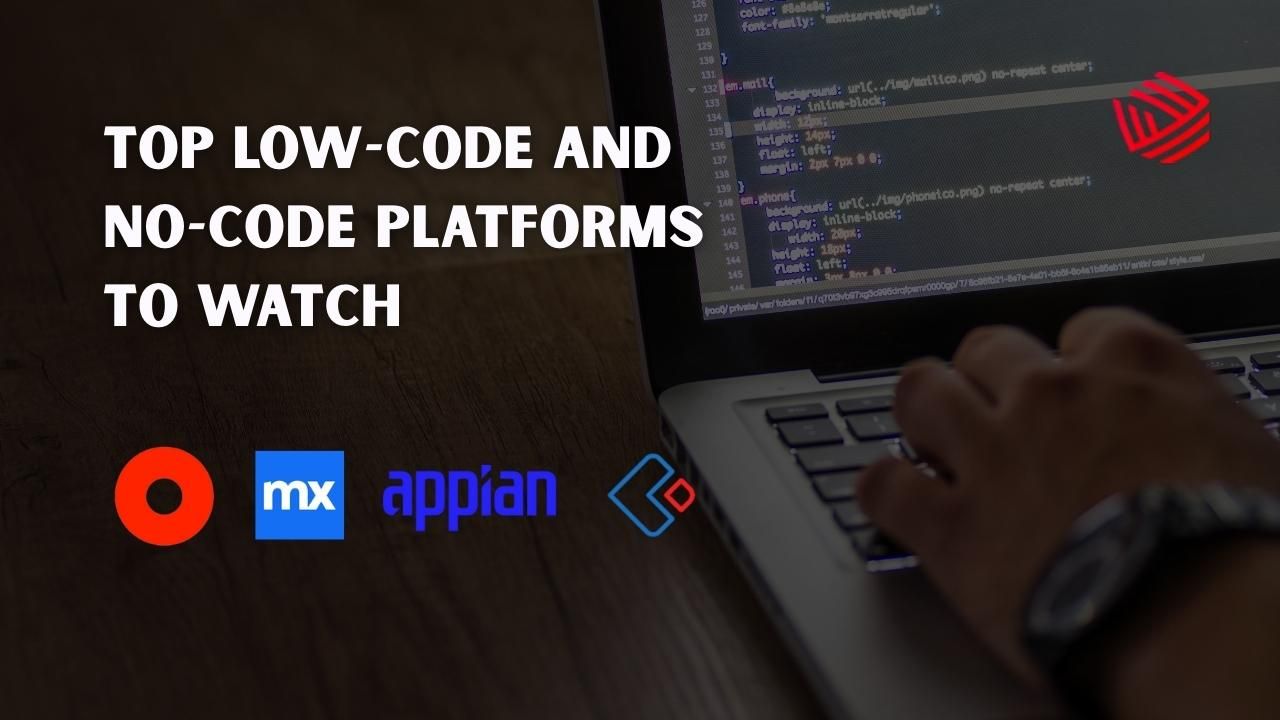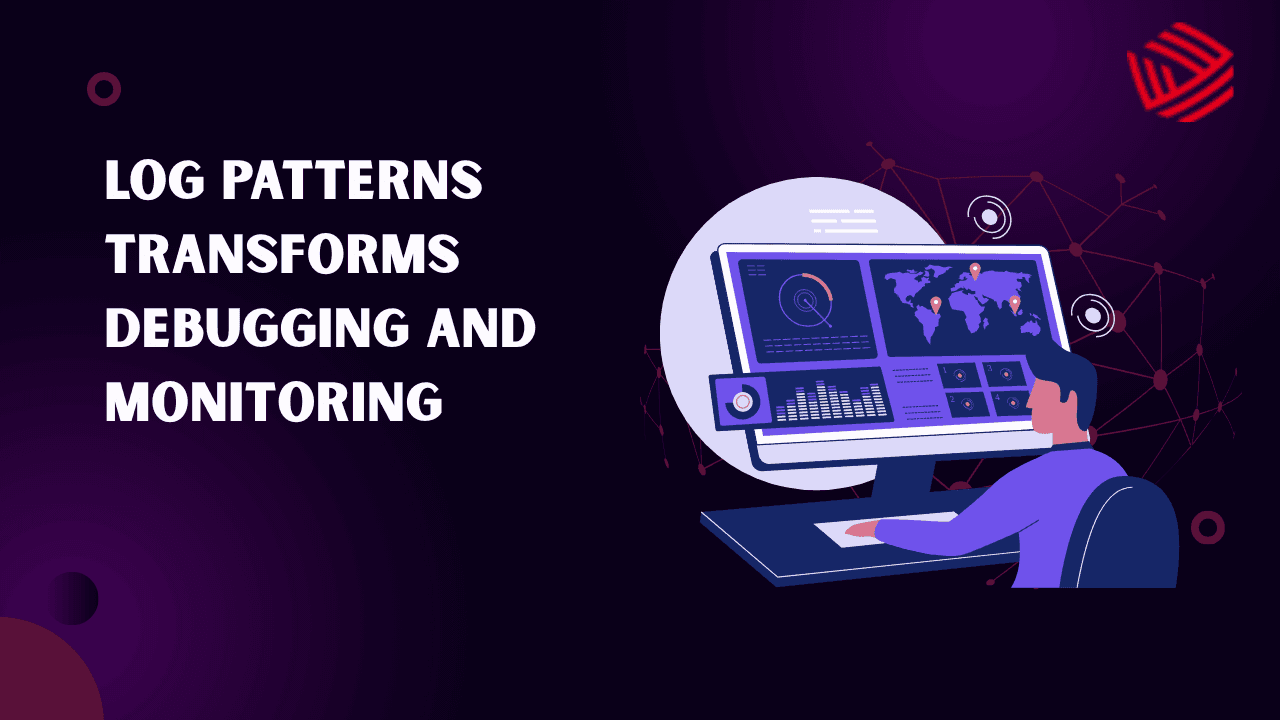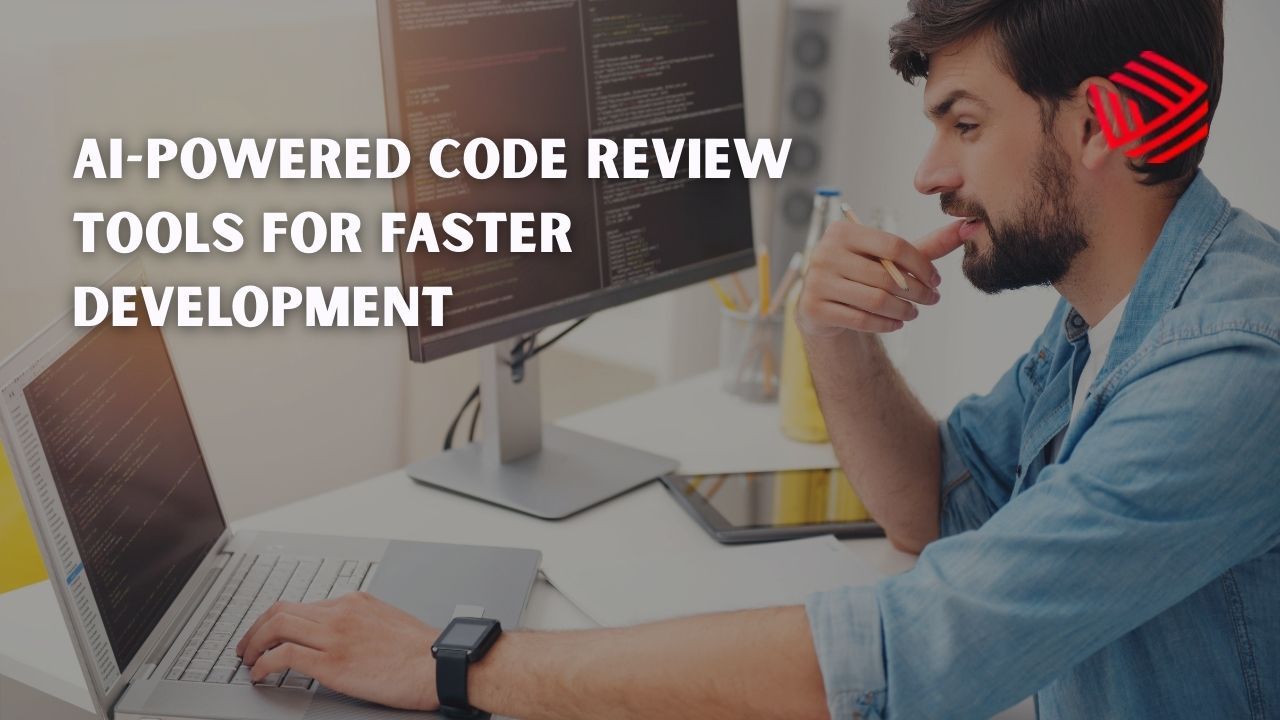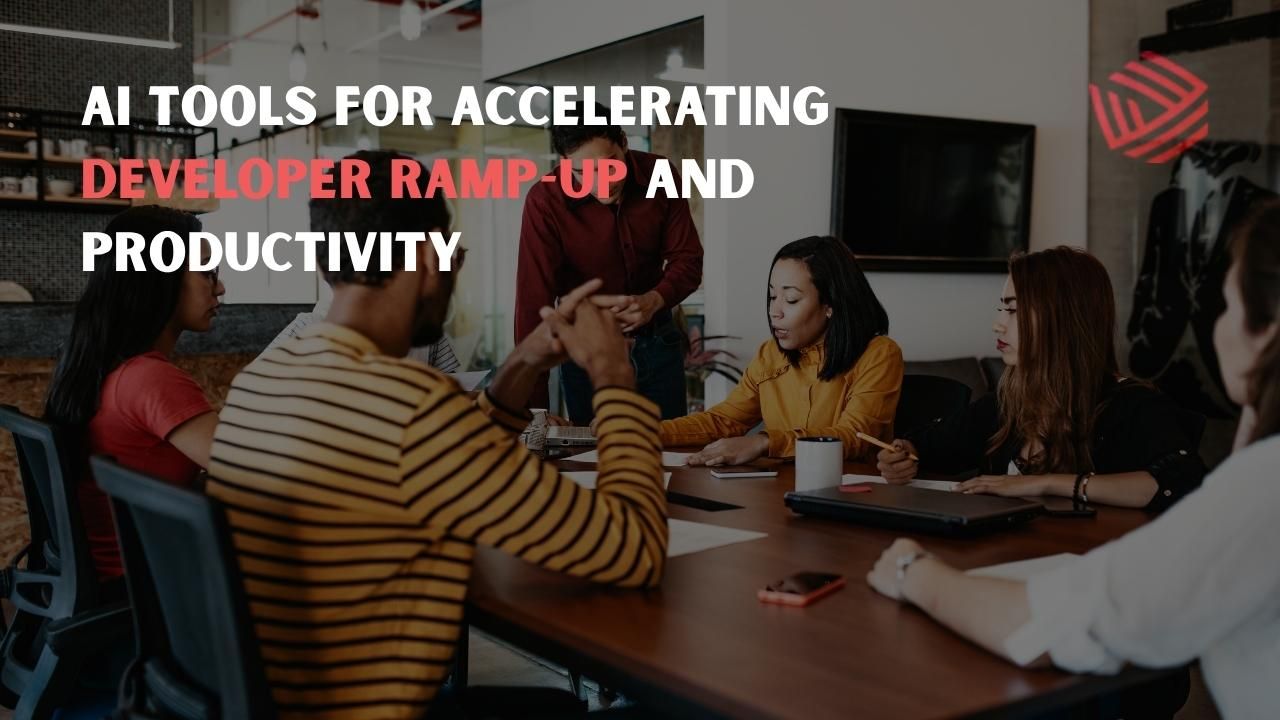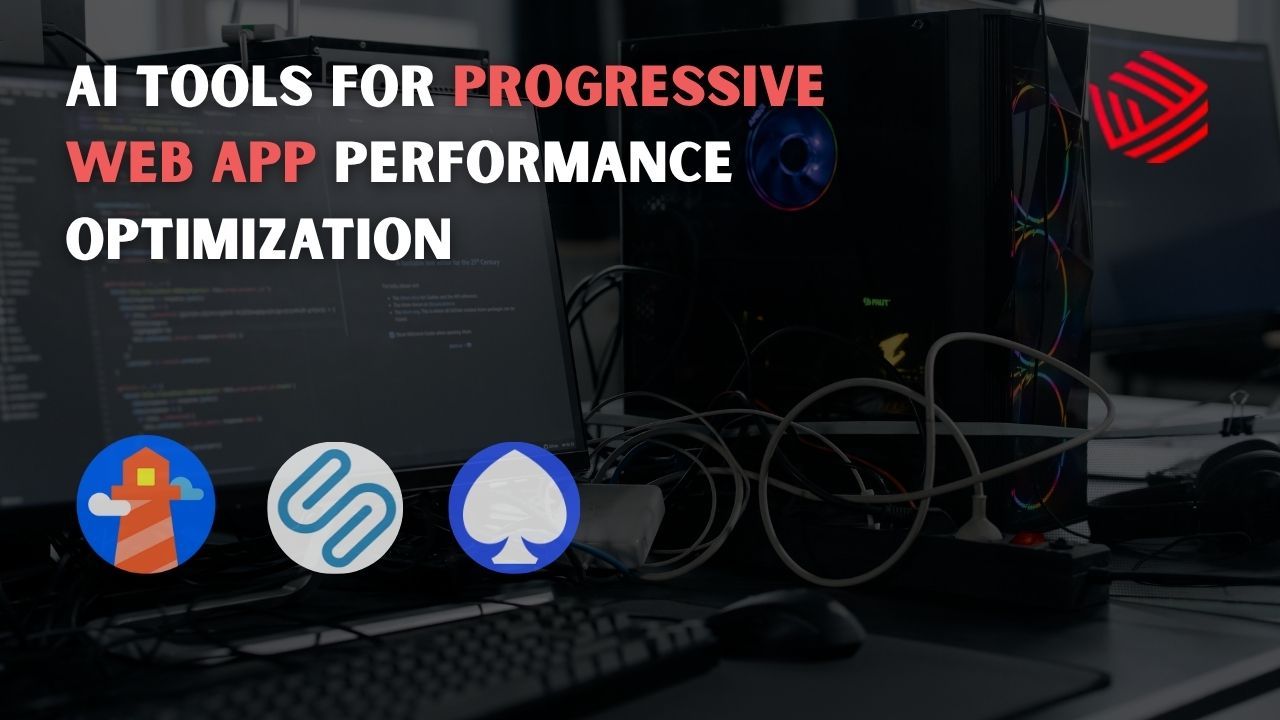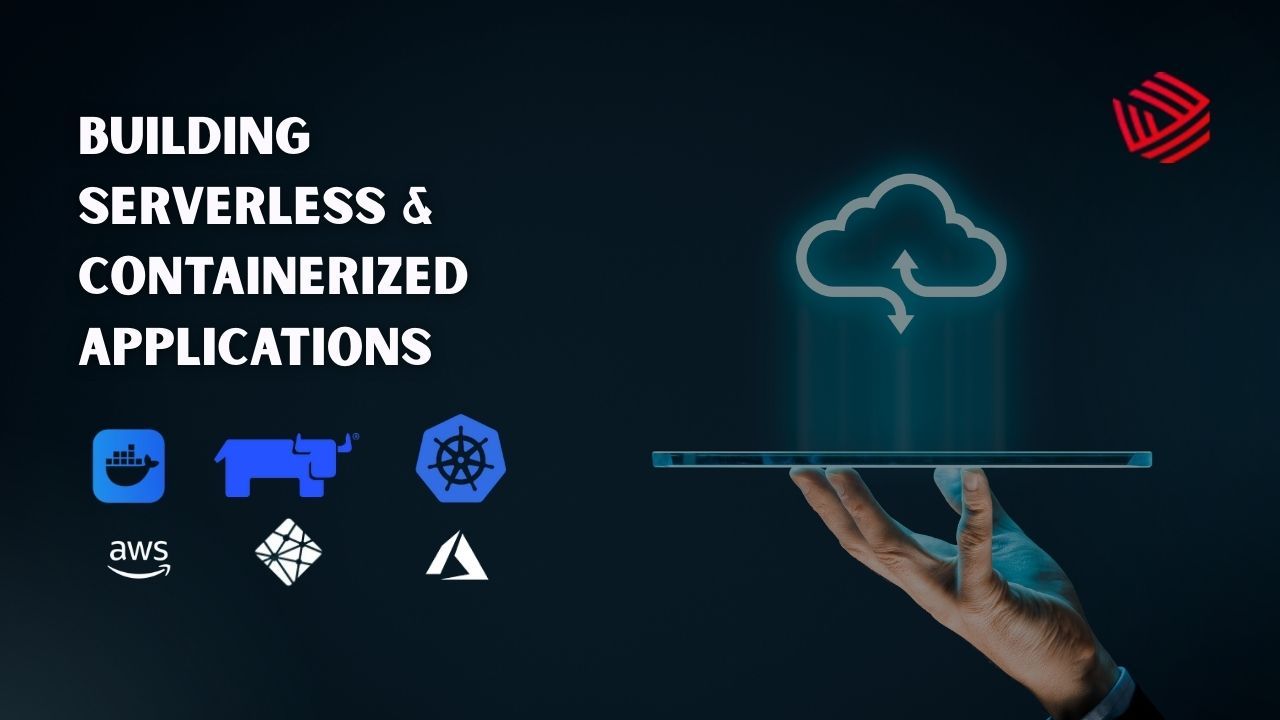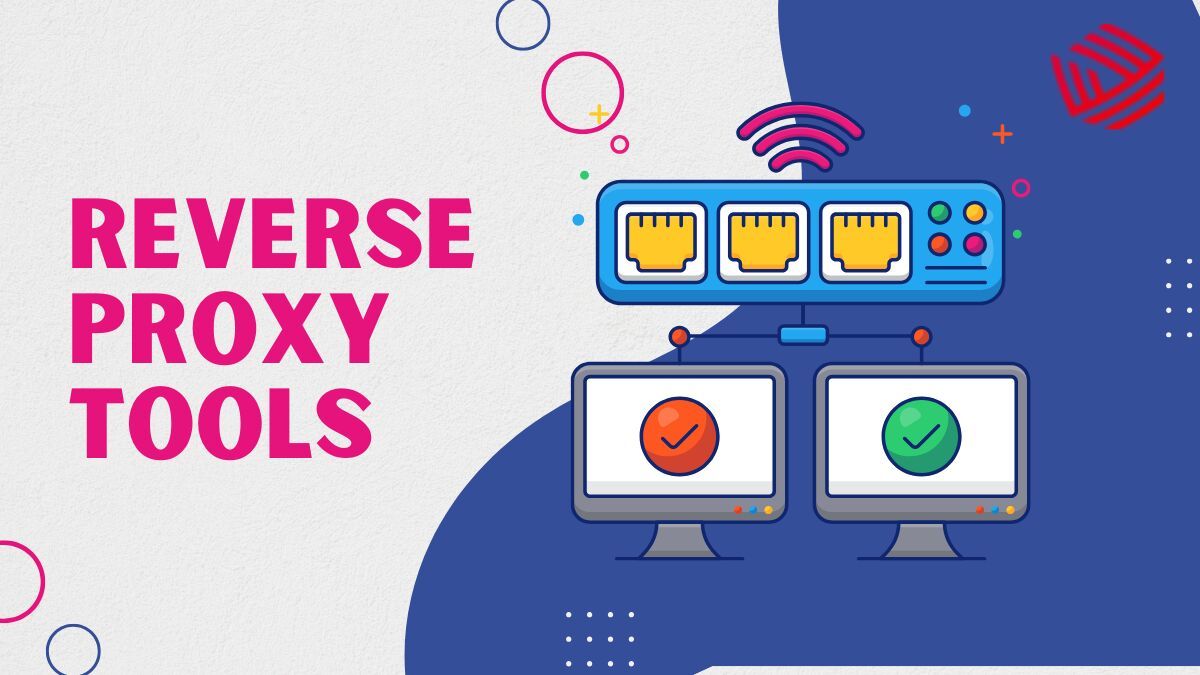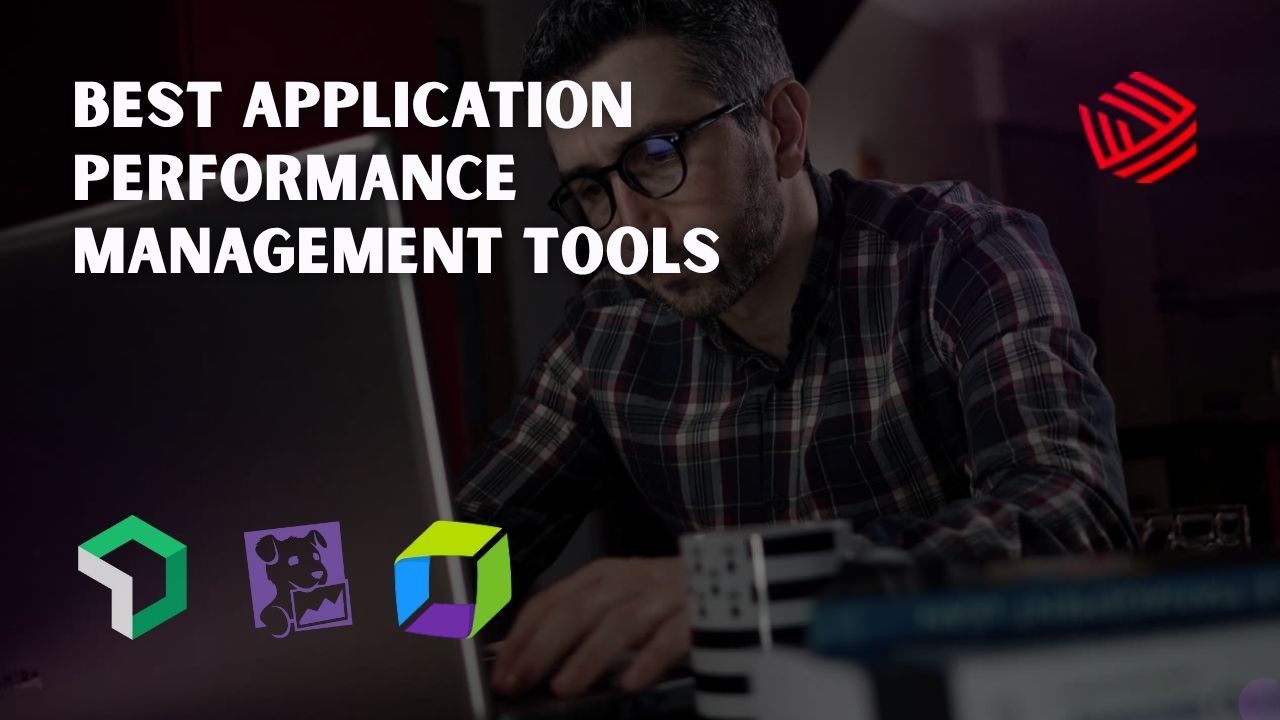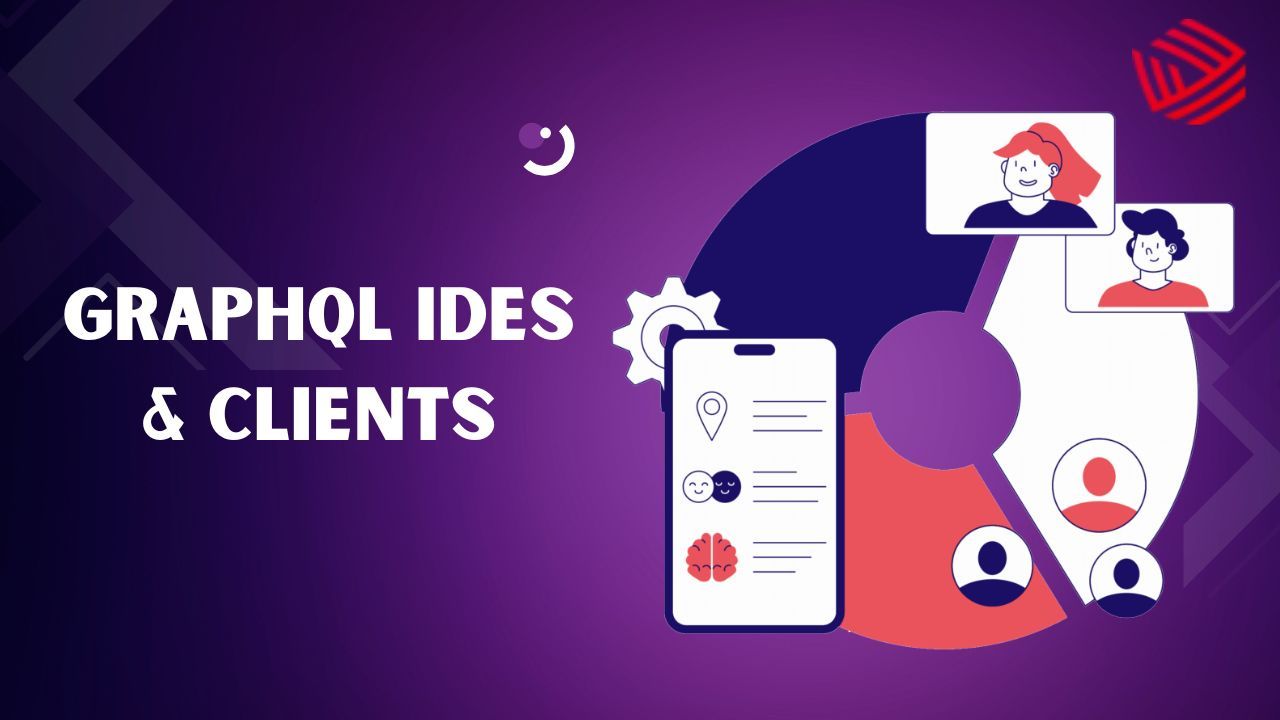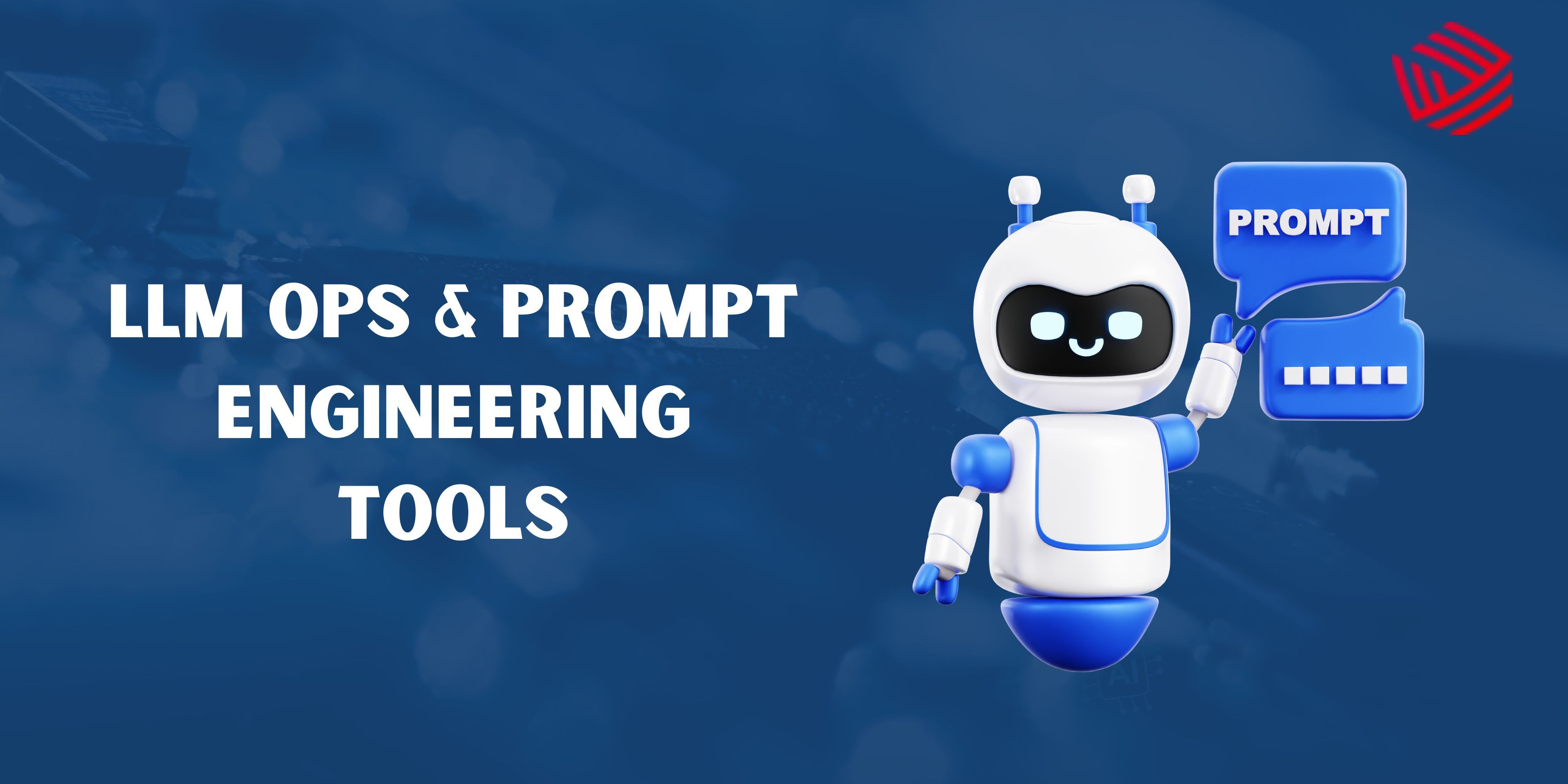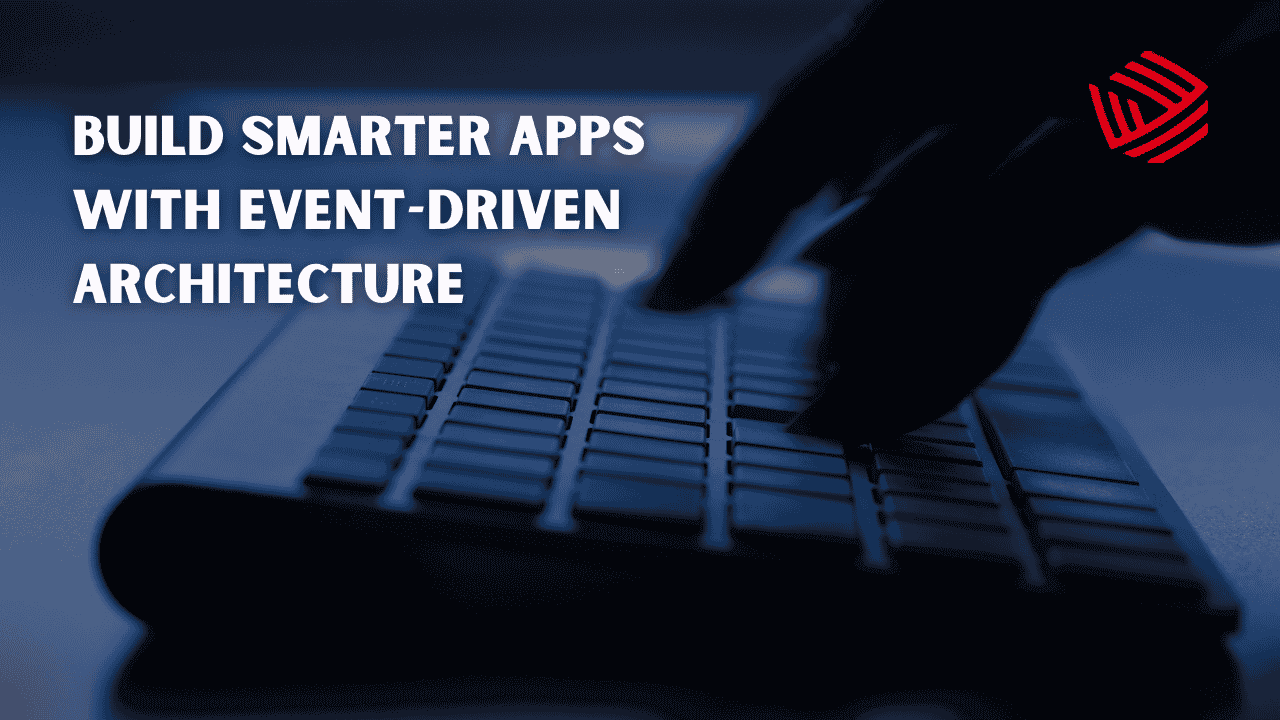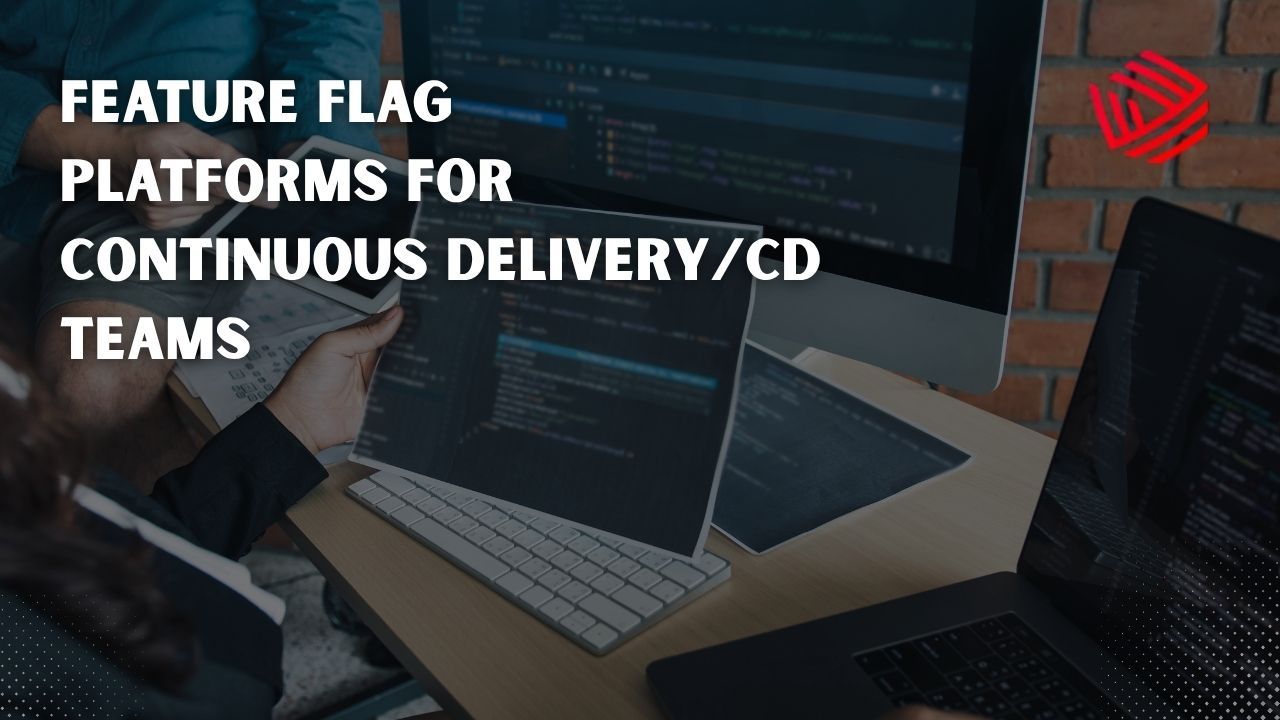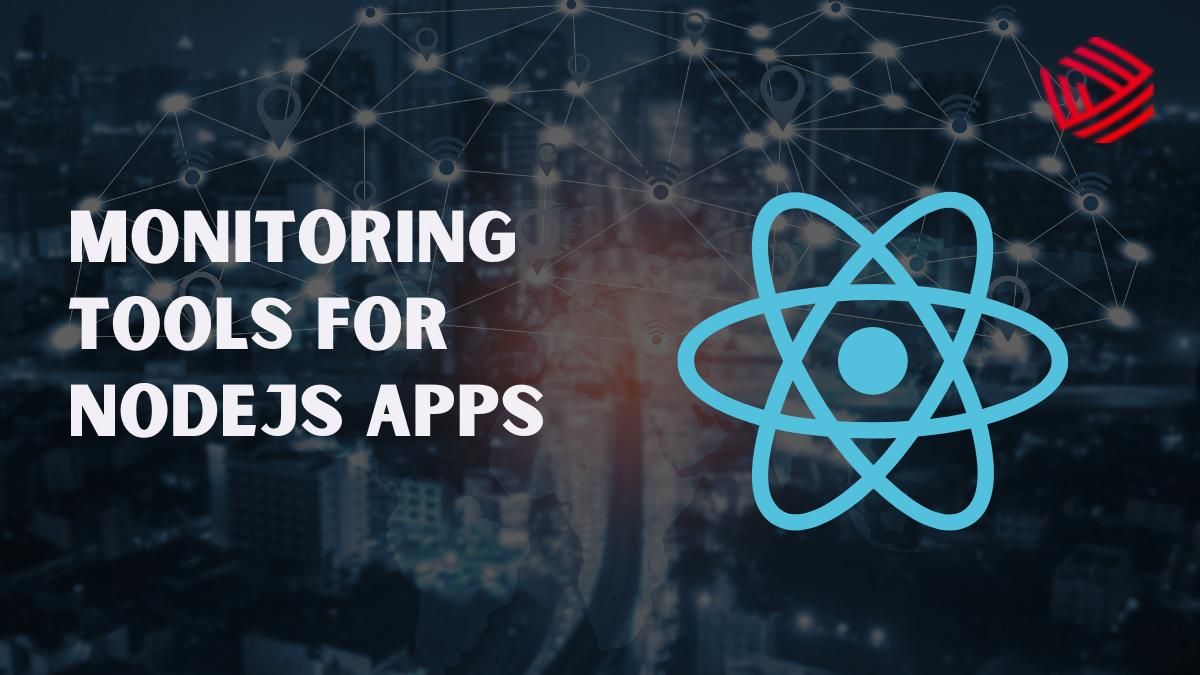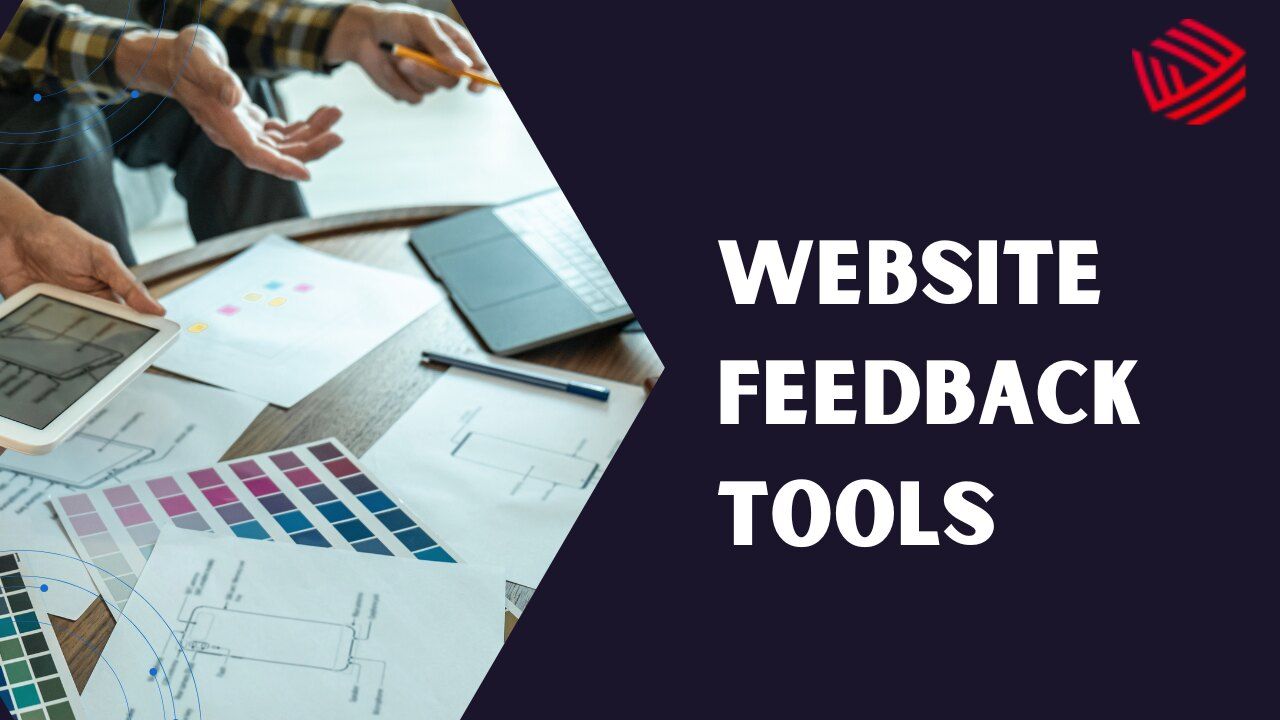In today’s fast-paced digital world, mobile apps compete fiercely for user attention. With over 3.5 million apps on the Google Play Store and 1.8 million on the Apple App Store, it's easy for users to forget about an app once it's downloaded. This is where push notifications come in. Push notifications are short, clickable messages that appear on a user’s device—even when the app isn't open. These timely nudges help businesses retain users, increase engagement, promote offers, and deliver personalized content. However, sending the right message at the right time requires a robust tool that offers segmentation, analytics, automation, and multi-channel support. To create seamless push experiences across devices and platforms, many businesses prefers Flutter and react native developers for cross-platform mobile development.
1. OneSignal

OneSignal remains one of the most popular push notification tools because of its balance between ease of use, scalability, and pricing flexibility. It supports not only mobile app notifications but also web, email, and SMS campaigns—all within a unified dashboard. Developing scalable MVPs, SaaS or other software development is nowadays easy due to advancement in ai technologies resolving repetitive code to be written manually by developers. Beyond mobile app push, OneSignal also covers web, SMS, and email notifications—making it a true omnichannel communication platform. The drag-and-drop composer and audience segmentation features empower non-technical teams to set up personalized campaigns in minutes.
What really makes OneSignal powerful is its delivery optimization engine, which analyzes open rates and send-time patterns to automatically adjust delivery windows for maximum engagement. With real-time A/B testing, message scheduling, and localization support, it helps teams maintain relevance across geographies. Developers love its robust APIs, REST integration, and SDK support for frameworks like Flutter, React Native, and Unity. Whether you’re building a new MVP or managing a SaaS platform with millions of users, OneSignal scales effortlessly while keeping costs predictable.
| Category | Details |
|---|---|
| Overview | A leading cross-platform notification platform supporting mobile, web, email, and SMS. Known for scalability and ease of use. |
| Key Features | Pre-built templates, drag-and-drop campaign builder, intelligent segmentation, real-time delivery optimization, A/B testing. |
| Ideal For | Early-stage apps, SaaS startups, and eCommerce platforms focusing on user engagement and retention. |
| Pricing / Scalability | Free for up to 10K subscribers; flexible paid plans as user base grows. |
| Integration / Developer Experience | SDKs for iOS, Android, Web, Unity, React Native; strong documentation and API support. |
2. Firebase Cloud Messaging (FCM)
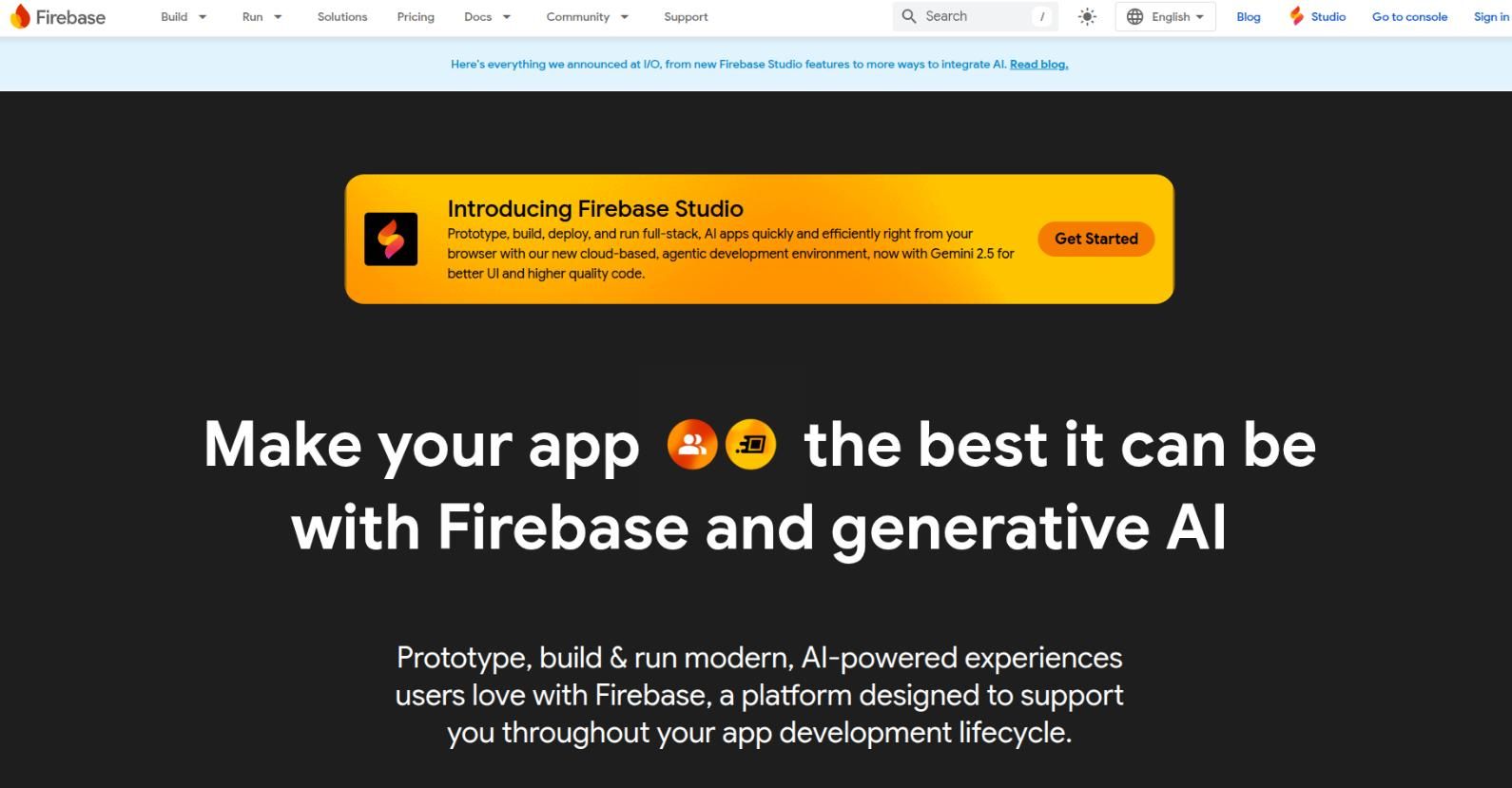
Firebase Cloud Messaging, a flagship product from Google’s Firebase suite, is the backbone of Android app notifications. It’s completely free and integrates deeply with other Firebase tools—like Analytics for tracking engagement, Crashlytics for monitoring errors, and Firestore for real-time data syncing. This makes it ideal for development teams already using Firebase as their backend infrastructure.
Beyond Android, FCM also supports iOS and web push notifications, providing flexibility for cross-platform deployment. Its serverless architecture means developers don’t have to manage their own notification infrastructure—messages can be sent directly through Firebase’s cloud APIs. For event-driven apps or real-time updates, FCM delivers near-instant messages with impressive reliability. Paired with Firebase Analytics, developers can segment audiences, personalize content, and measure notification performance without third-party dependencies. Its documentation and SDKs are among the best in the ecosystem, making it a top pick for Android-first development teams.
| Category | Details |
|---|---|
| Overview | Google’s free and reliable cloud messaging platform built into Firebase. Great for Android ecosystems and event-based notifications. |
| Key Features | Unlimited free notifications, strong delivery infrastructure, analytics integration, and automation through Firebase tools. |
| Ideal For | Android-first mobile apps, backend-less products, or apps already using Firebase suite (Crashlytics, Analytics, Firestore). |
| Pricing / Scalability | Completely free and infinitely scalable under Google Cloud’s infrastructure. |
| Integration / Developer Experience | Excellent developer SDKs, REST APIs, and Android Studio integration. Ideal for fast CI/CD pipelines. |
3. Airship
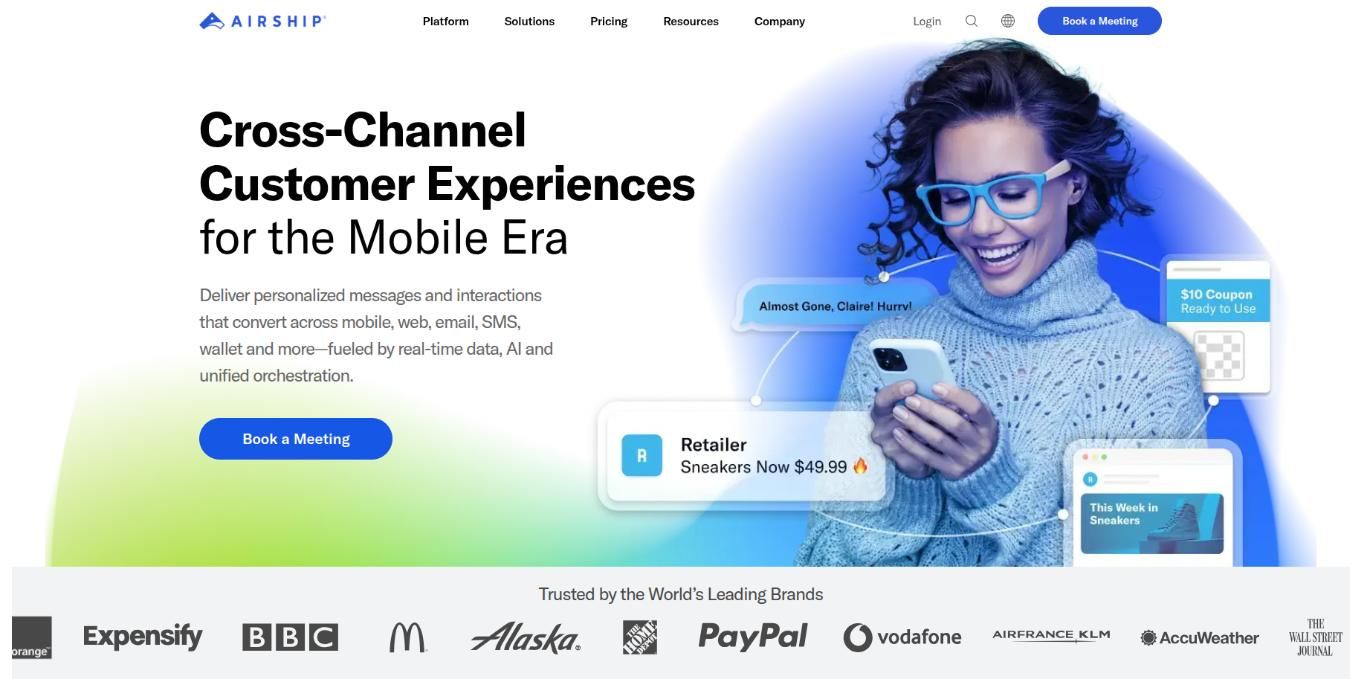
Airship (formerly Urban Airship) is built for enterprises that need precise control, scalability, and omnichannel personalization. It’s much more than a push delivery engine—it’s a customer engagement platform that enables personalized journeys across push, email, SMS, in-app, and even mobile wallet notifications. Airship’s predictive AI models use behavioral and contextual data to determine the perfect moment to send messages, ensuring users are never spammed and engagement remains high.
The platform’s strength lies in its orchestration engine, which allows teams to design complex user journeys that adapt in real-time based on user actions. For instance, a user who doesn’t open a promotional push could automatically receive a follow-up email or SMS instead. Enterprise-grade analytics, A/B testing, and privacy compliance make Airship a preferred choice for industries like banking, travel, and retail. Its integration with major CRMs, CDPs, and data lakes further positions it as a premium solution for large-scale mobile engagement.
| Category | Details |
|---|---|
| Overview | Enterprise-grade platform offering omnichannel messaging with AI-driven personalization and automation. |
| Key Features | Predictive send-time optimization, journey orchestration, machine learning analytics, and cross-channel campaigns (push, SMS, email, wallets). |
| Ideal For | Large enterprises in finance, retail, airlines, and media requiring scale and data-driven campaigns. |
| Pricing / Scalability | Premium pricing; scalable for millions of users and global reach. |
| Integration / Developer Experience | SDKs for iOS, Android, Flutter; advanced API and automation workflows; supports REST and webhook integrations. |
4. CleverTap
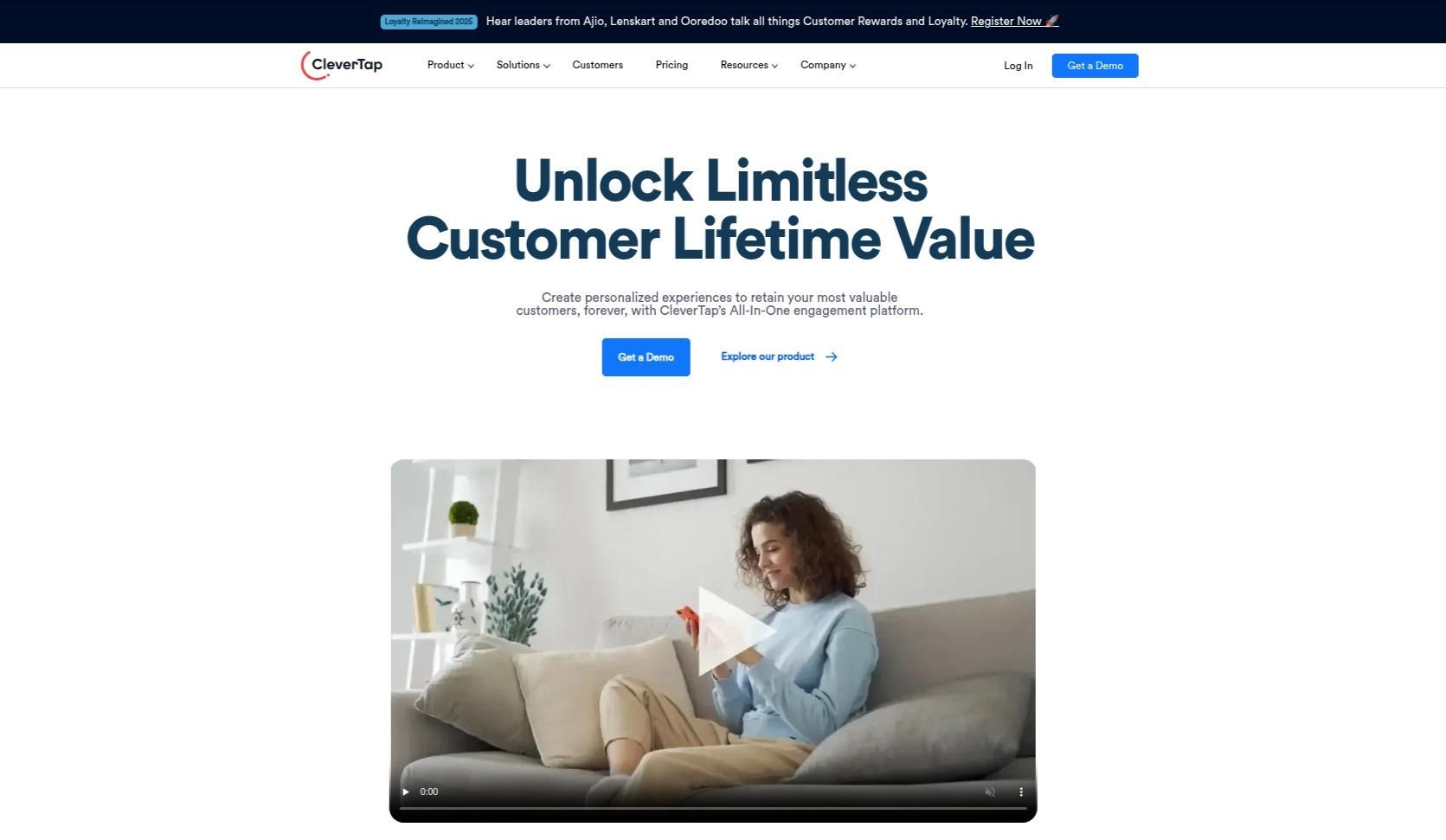
CleverTap bridges the gap between marketing and product teams. It combines advanced behavioral analytics with powerful push and in-app messaging tools, giving businesses everything they need to engage users at every step of their journey. CleverTap is very useful for the full stack developers, who builds projects like integrated analytics and marketing systems. It helps businesses understand user behavior through detailed cohort analysis, funnels, and retention metrics—then turn those insights into personalized push notifications and in-app experiences.
With AI-driven segmentation and real-time personalization, CleverTap empowers brands to deliver messages that feel personal, not promotional. Its automation engine supports multi-step journeys, from onboarding and activation to churn prevention. The platform’s built-in recommendation system analyzes user activity to suggest optimal offers or content, while its integration with mobile analytics tools ensures end-to-end visibility. Whether you’re in fintech, OTT, or eCommerce, CleverTap’s intelligence-driven engagement strategy helps maximize lifetime value and retention through thoughtful, data-backed messaging.
| Category | Details |
|---|---|
| Overview | A comprehensive user engagement and analytics suite merging marketing automation with behavioral intelligence. |
| Key Features | Journey-based funnels, AI-driven engagement scoring, dynamic segmentation, real-time analytics, supports 13+ channels. |
| Ideal For | B2C businesses in fintech, OTT, travel, or e-learning that need high personalization and lifecycle automation. |
| Pricing / Scalability | Custom enterprise pricing; scales with engagement volume and data complexity. |
| Integration / Developer Experience | REST APIs, SDKs for Android, iOS, React Native; integrates with Mixpanel, Segment, and MoEngage. |
5. Pushwoosh

Pushwoosh excels at delivering fast, reliable push notifications with a global reach. It offers native SDKs for iOS, Android, and popular cross-platform frameworks like React Native, Cordova, and Flutter—making integration easy for distributed or hybrid development teams. Its multilingual and localization features make it ideal for businesses with audiences spanning multiple regions. What sets Pushwoosh apart is its automation engine that supports triggers for cart abandonment, onboarding, and inactivity reminders. Marketers can easily set up rich notifications with images, GIFs, and interactive buttons to drive higher conversions. Its real-time reporting and campaign analytics help teams fine-tune their strategies and measure ROI. For hybrid app developers seeking enterprise-like performance without premium pricing, Pushwoosh strikes an excellent balance between scalability and affordability.
| Category | Details |
|---|---|
| Overview | Multi-platform push service emphasizing localization, automation, and hybrid framework support. |
| Key Features | Supports multilingual campaigns, interactive notifications, real-time automation, audience targeting. |
| Ideal For | Global or hybrid app teams (React Native, Xamarin, Cordova) seeking multi-language messaging. |
| Pricing / Scalability | Tiered plans from free to enterprise; affordable for mid-scale apps. |
| Integration / Developer Experience | SDKs for native and cross-platform apps; robust REST API and dashboard for campaign management. |
6. Braze

Braze redefines customer engagement with its data-driven approach to push and in-app communication. It goes beyond message delivery—helping teams orchestrate entire customer journeys through its visual “Canvas” workflow builder. With real-time event tracking, behavioral triggers, and Liquid templating for personalized content, Braze ensures that every message feels like a natural part of the user experience. The platform integrates natively with CDPs like Segment and data tools such as Mixpanel and Amplitude, allowing for advanced audience segmentation and campaign measurement. Braze’s ability to connect messaging with live user data enables truly adaptive communication—users receive different messages depending on their recent actions. Its enterprise-grade reliability and compliance standards make it a preferred solution for high-growth startups and global brands that need consistent, personalized engagement at scale.
| Category | Details |
|---|---|
| Overview | Full-stack customer engagement suite with real-time data pipelines and advanced personalization. |
| Key Features | Canvas journey builder, Liquid templating, real-time data syncs, audience segmentation, CDP integrations. |
| Ideal For | Marketing automation teams, data-driven startups, and growth-stage apps needing behavioral campaigns. |
| Pricing / Scalability | Premium enterprise solution; scales efficiently with complex data models. |
| Integration / Developer Experience | Integrates with Segment, Amplitude, Mixpanel, and major CRMs; advanced SDK support for cross-platform apps. |
7. MoEngage

MoEngage is built around intelligence, personalization, and retention. The platform’s AI engine—Sherpa—analyzes engagement patterns to predict the best times to send notifications, reducing notification fatigue. It offers omnichannel reach through push, in-app, email, SMS, WhatsApp, and web notifications, helping brands maintain consistent messaging across user touchpoints. MoEngage stands out for its deep funnel analysis and campaign automation capabilities. It can automatically trigger different notifications based on user actions or inactivity, helping brands build retention loops without manual oversight. Geo-targeting and DND optimization ensure relevance and respect user preferences. For industries like fintech, retail, or media streaming, MoEngage’s lifecycle management tools can significantly increase engagement and reduce churn, making it one of the smartest investments for long-term app success.
| Category | Details |
|---|---|
| Overview | AI-powered customer engagement platform focused on retention, funnel analytics, and predictive personalization. |
| Key Features | Sherpa AI for optimal send times, funnel analytics, geo-targeting, omnichannel delivery (push, email, SMS, WhatsApp). |
| Ideal For | Mobile-first brands in eCommerce, OTT, fintech, and lifestyle segments. |
| Pricing / Scalability | Scalable pricing based on MAUs and engagement volume; enterprise and mid-tier options. |
| Integration / Developer Experience | SDKs for mobile and web; integrates with CRM and BI systems; simple REST API and automation builder. |
8. Pusher Beams

Pusher Beams focuses on transactional and real-time push notifications—ideal for instant alerts in apps like ride-hailing, messaging, or banking. It’s extremely developer-centric and offers precise targeting and APIs. For event-driven apps, NodeJS developers are preferred to build fast, real-time backend infrastructures that works seamlessly with Pusher Beams. The API-first design lets developers control everything from targeting to delivery, while native SDKs for Android and iOS simplify integration. Each push is delivered in milliseconds, and the system scales effortlessly as user demand grows. Built-in encryption, GDPR, and HIPAA compliance make it ideal for apps handling sensitive information. When combined with a Node.js or Go backend, Pusher Beams can power mission-critical, event-driven communication pipelines that keep users informed in real time without compromising performance.
| Category | Details |
|---|---|
| Overview | Real-time push notification service built for event-driven apps requiring fast and precise delivery. |
| Key Features | Instant push delivery, individual device targeting, RESTful API control, high security (GDPR/HIPAA compliant). |
| Ideal For | Apps needing transactional or real-time updates—chat, rideshare, fintech, logistics, or emergency systems. |
| Pricing / Scalability | Usage-based pricing; free tier for testing and low-volume apps. |
| Integration / Developer Experience | Developer-friendly SDKs and APIs for NodeJS, React Native, Flutter, and native apps; strong documentation. |
9. Kumulos
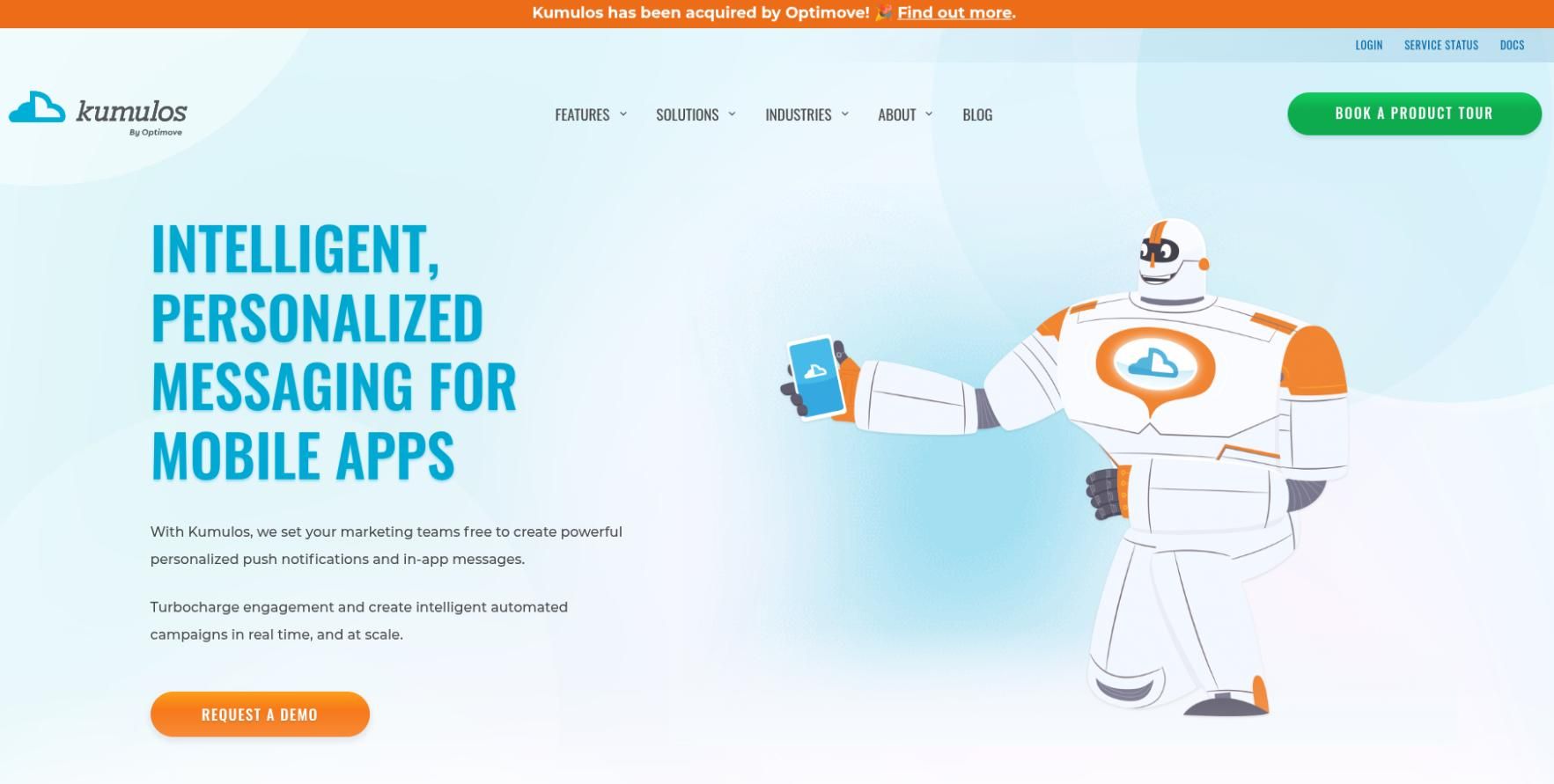
Kumulos takes a holistic approach by combining mobile push delivery with app performance management. This dual capability allows developers to monitor app health while engaging users with personalized messaging. Its standout feature is location-based engagement—enabling geofencing and proximity-triggered campaigns that deliver notifications when users enter or exit defined areas. The platform also supports rich content, deep links, and automation based on behavioral triggers. With white-label options and robust API access, Kumulos appeals to agencies and product teams managing multiple apps. Its reporting suite connects user engagement with app stability metrics, providing a 360° view of performance and retention. Whether it’s promoting local offers or improving app experience, Kumulos turns location and analytics into meaningful user engagement.
| Category | Details |
|---|---|
| Overview | Combines push delivery with app performance monitoring, offering deep analytics and location-based marketing. |
| Key Features | Geo-fencing, crash reporting, behavioral automation, white-label dashboards, API access. |
| Ideal For | Location-based apps—real estate, tourism, hospitality, logistics. |
| Pricing / Scalability | Mid-range pricing; modular plans for analytics, engagement, and white-label features. |
| Integration / Developer Experience | SDKs for iOS, Android, Unity; REST API; integrates with backend services for performance insights. |
10. WonderPush
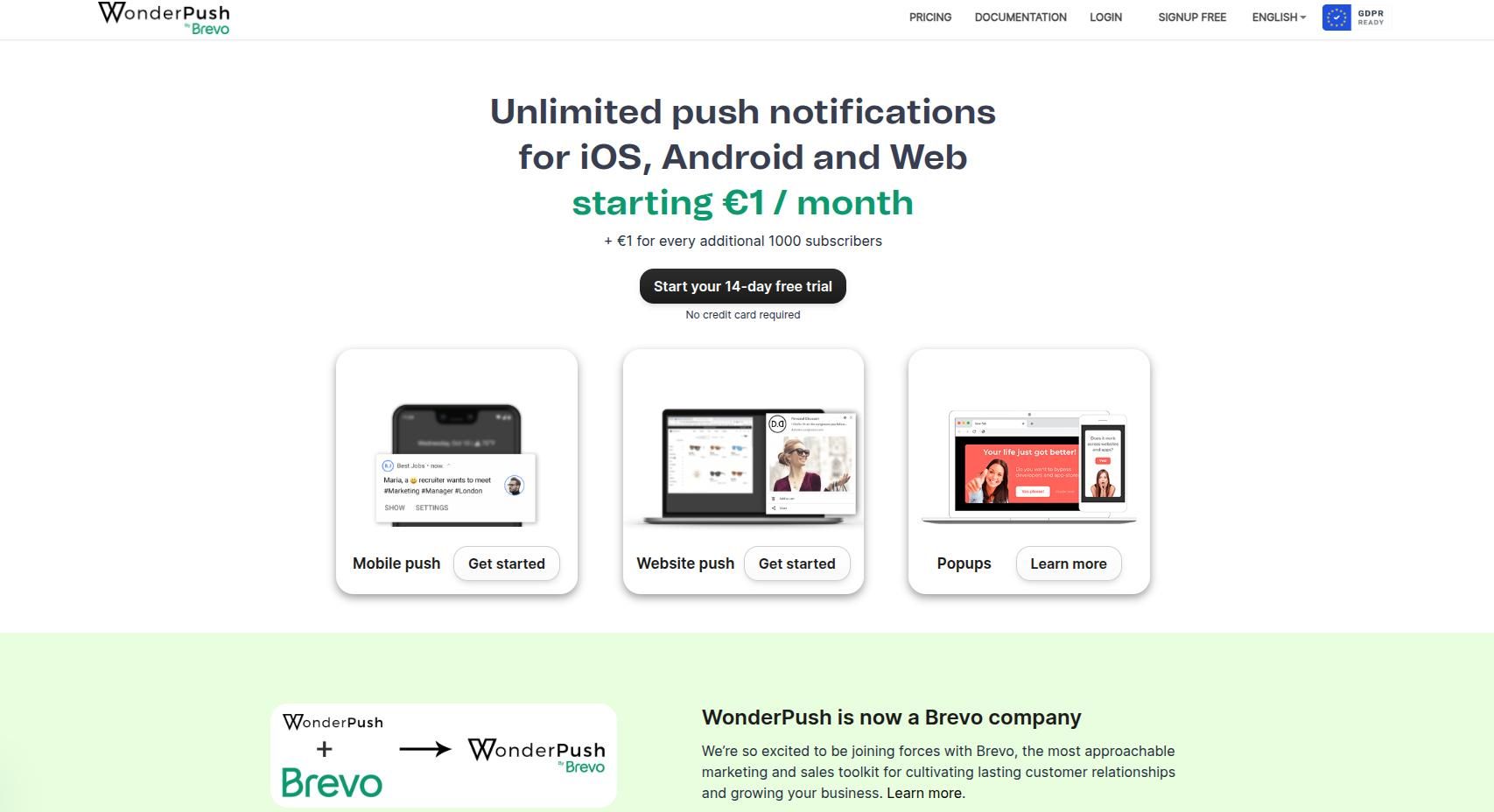
WonderPush is one of the fastest-growing push platforms in Europe, offering a simple yet powerful feature set tailored for small and mid-sized businesses. Its pricing model—based on monthly active users—makes it affordable for teams looking for enterprise-grade reliability without long-term contracts. The platform supports mobile and web push, in-app messages, and dynamic segmentation based on user behavior. Developers appreciate its lightweight SDKs and RESTful API, which allow rapid setup and customization. With built-in analytics and automation, marketers can schedule campaigns, track performance, and optimize for engagement in real time. WonderPush’s full GDPR compliance, high-speed delivery, and visual campaign builder make it a perfect fit for startups, eCommerce brands, and mobile-first companies focused on agility and compliance.
| Category | Details |
|---|---|
| Overview | GDPR-compliant, cost-effective platform ideal for SMBs needing quick push deployment. |
| Key Features | Flat-rate pricing, RESTful API, rich media support, real-time segmentation, in-app messaging. |
| Ideal For | Budget-conscious developers and small to mid-sized businesses focusing on plug-and-play push. |
| Pricing / Scalability | Transparent pricing based on active users; highly scalable infrastructure. |
| Integration / Developer Experience | SDKs for all major frameworks (Flutter, React Native, Cordova); easy setup and rapid implementation. |
Conclusion
There’s no single “best” push notification platform. The right tool depends on:
- Your business stage: MVP, scaling startup, enterprise
- Your audience: global or regional, tech-savvy or mass-market
- Your app’s purpose: content, commerce, gaming, fintech, utility, or lifestyle
- Your internal resources: developer strength, marketing automation capacity
If you’re just starting, try Firebase or OneSignal. If you’re scaling, CleverTap or MoEngage offers unbeatable segmentation and automation. For advanced targeting, journey orchestration, and customer data integrations, Braze or Airship is worth the investment. Push notifications are more than just pings. They are conversations. And like all great conversations, they should be timely, relevant, and thoughtful. There are lot of database migration tools for the developers for the integrity of data and the optimal web standards like tackling databases during scaling.

